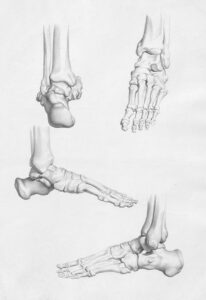Sweating is a natural and essential process for the human body, often associated with physical exertion, heat, and moments of nervousness. While it may seem inconvenient at times, sweating plays a vital role in maintaining our health and well-being. Primarily, sweating helps regulate body temperature and prevent overheating, making it a crucial component of our body’s ability to adapt to environmental and internal conditions.
In this article, we explore the biological mechanisms behind sweating, its role in thermoregulation, the different types of sweat glands, and the various factors that influence sweating. We also discuss the benefits of sweating beyond temperature regulation, including detoxification, skin health, and stress management. By understanding why we sweat and the importance of this process, we can appreciate how our bodies work to maintain balance and protect us from the challenges of changing environments.
The Science of Sweating: How and Why We Sweat
The Mechanism of Thermoregulation
The human body maintains an optimal temperature of around 37°C (98.6°F), a process known as thermoregulation. This narrow temperature range is essential for the proper functioning of enzymes and metabolic processes, which are highly sensitive to temperature fluctuations. When body temperature rises, whether due to environmental heat, physical activity, or stress, the body needs a way to cool itself to avoid overheating and maintain homeostasis.
The primary way the body cools down is through evaporative cooling. When sweat is released onto the skin’s surface and evaporates, it absorbs heat, effectively lowering the skin and body’s temperature. This cooling effect helps the body maintain a stable internal environment, even in challenging conditions.
The process of sweating begins in the hypothalamus, a part of the brain that acts as the body’s thermostat. When the hypothalamus detects a rise in temperature, it sends signals through the autonomic nervous system to activate sweat glands throughout the body. This rapid response ensures that sweat is produced and secreted, allowing the body to regulate its temperature efficiently.
Types of Sweat Glands
The human body has two main types of sweat glands, each with distinct characteristics and functions:
- Eccrine Sweat Glands
- Location: Eccrine glands are found all over the body, with the highest concentrations on the palms, soles, forehead, and armpits.
- Function: These glands are responsible for producing sweat that primarily consists of water, electrolytes, and small amounts of waste products. Eccrine glands play a central role in thermoregulation, as they release sweat directly onto the skin’s surface, facilitating evaporative cooling.
- Activation: Eccrine glands are activated in response to an increase in body temperature due to environmental heat, physical exertion, or fever.
- Apocrine Sweat Glands
- Location: Apocrine glands are concentrated in areas with hair follicles, such as the armpits, groin, and scalp.
- Function: Unlike eccrine sweat, apocrine sweat contains proteins, lipids, and other organic compounds, which can produce body odor when broken down by bacteria on the skin.
- Activation: Apocrine glands are typically activated by emotional stress or hormonal changes rather than heat. They become active during puberty, which is why teenagers often experience increased sweating and body odor.
Both types of glands contribute to the body’s cooling system, although eccrine glands play a more direct role in temperature regulation, while apocrine glands are more involved in stress responses and signaling.
The Benefits of Sweating for Health and Well-Being
Cooling and Preventing Heat-Related Illnesses
The most immediate benefit of sweating is its ability to cool the body down and prevent heat-related illnesses, such as heat exhaustion and heat stroke. When the body is exposed to high temperatures or intense physical activity, the risk of overheating increases. Sweating, by releasing moisture that evaporates from the skin, allows the body to dissipate excess heat efficiently.
If the body were unable to sweat, it would struggle to regulate temperature effectively, which could lead to dangerous spikes in core body temperature. Without proper cooling mechanisms, the body could experience symptoms like dizziness, fatigue, dehydration, and in severe cases, organ failure. Thus, sweating is a critical safeguard against the risks of overheating, especially in hot climates or during strenuous physical activities.
Skin Health and Detoxification
Sweating is often associated with detoxification, as it helps remove small amounts of waste products from the body. Although the liver and kidneys are the primary organs responsible for detoxifying the body, sweat can help eliminate trace amounts of substances, including urea, ammonia, and lactic acid. While these waste products are removed primarily through urine, sweat provides an additional route for their elimination.
Sweating also contributes to skin health. When sweat flows to the skin’s surface, it helps remove impurities, dirt, and dead skin cells from the pores. This natural cleansing process can reduce the likelihood of clogged pores and promote a healthier complexion. Additionally, sweat contains antimicrobial peptides, which can inhibit the growth of certain types of bacteria on the skin, potentially reducing the risk of skin infections.
Emotional Regulation and Stress Reduction
Sweating plays a role in managing emotional and psychological stress. When we experience stress, anxiety, or fear, the body activates the fight-or-flight response, which triggers the release of adrenaline and other stress hormones. In response, the apocrine sweat glands, particularly those in the armpits and palms, become more active. This type of sweating, often referred to as emotional sweating, is distinct from the thermoregulatory sweat produced by eccrine glands.
While emotional sweating is commonly associated with nervousness or fear, sweating during physical exercise can also have positive effects on stress and mood. Physical activity releases endorphins, the body’s natural “feel-good” chemicals, which contribute to a sense of well-being and relaxation. Regular exercise and sweating can reduce anxiety, improve mood, and support overall mental health by releasing built-up tension and promoting relaxation.
Immune System Support
Emerging research suggests that sweating may have benefits for the immune system. Sweating stimulates the production of dermcidin, an antimicrobial peptide that can kill bacteria, fungi, and viruses on the skin’s surface. This antimicrobial action helps protect the body from potential infections and pathogens.
Additionally, sweating, especially through activities like sauna use, has been shown to simulate the effects of a mild fever. This can activate the immune response, potentially improving the body’s resilience to infections. However, while sweating may offer some immune support, it should not be relied upon as a primary defense against illness, and proper hygiene practices are essential to maintain skin health.
Factors Affecting Sweating: Why We Sweat Differently
Individual Differences and Genetics
People have different sweating patterns, influenced by factors such as genetics, age, fitness level, and gender. For example:
- Genetics: Some individuals inherit genes that make them more prone to sweating, while others may naturally sweat less.
- Age: As people age, sweat gland activity may decrease, leading to a lower volume of sweat.
- Fitness Level: Fit individuals may sweat more efficiently, as their bodies adapt to regulate temperature quickly during exercise.
- Gender: On average, men tend to have more active sweat glands than women, which may result in higher sweat production.
Climate and Environment
Climate plays a significant role in determining how much we sweat. Hot, humid environments make it difficult for sweat to evaporate, as the moisture in the air limits the effectiveness of evaporative cooling. As a result, people often sweat more in humid conditions, as the body tries harder to cool down.
In contrast, dry climates facilitate evaporation, allowing sweat to cool the body more efficiently. However, people may not feel as sweaty in these conditions, as the sweat evaporates quickly before it can accumulate on the skin.
Physical Activity and Fitness
During physical activity, the body generates heat as a byproduct of increased energy expenditure. The more intense the activity, the more heat the body produces, which requires effective cooling through sweating. Individuals who exercise regularly may sweat more quickly and efficiently, as their bodies adapt to maintain a stable core temperature. This adaptation helps athletes perform at high levels by regulating temperature and preventing overheating.
Medical Conditions and Medications
Certain medical conditions and medications can affect sweating patterns. For instance:
- Hyperhidrosis: A condition characterized by excessive sweating, often unrelated to temperature or activity levels, affecting areas like the palms, soles, and armpits.
- Anhidrosis: A condition where individuals are unable to sweat adequately, which can pose risks of overheating.
- Medications: Some medications, including antidepressants, painkillers, and hormone treatments, can increase sweating as a side effect.
Sweat and Exercise: The Role of Sweating in Physical Performance
Heat Adaptation and Endurance
Sweating is particularly important for athletes and individuals who engage in regular exercise. As body temperature rises during physical activity, sweating prevents overheating, allowing individuals to continue performing without experiencing heat-related fatigue. In addition to helping maintain core temperature, sweating also supports heat adaptation, a process where the body becomes more efficient at cooling itself over time.
Athletes who train regularly in hot environments develop a greater capacity to sweat and cool down effectively, improving their endurance and overall performance. This adaptation is especially beneficial for long-distance runners, cyclists, and outdoor sports enthusiasts, as it enables them to regulate temperature and avoid performance decline due to heat stress.
Electrolyte Balance and Rehydration
Sweat contains not only water but also electrolytes, such as sodium, potassium, and chloride, which are essential for various physiological processes, including muscle function and nerve signaling. As we sweat, we lose electrolytes, which can lead to dehydration and electrolyte imbalance if not replenished. Symptoms of electrolyte imbalance may include muscle cramps, fatigue, and dizziness.
To maintain electrolyte balance and hydration, individuals should consume water and electrolyte-rich beverages, especially during prolonged or intense exercise. Rehydration supports the body’s ability to continue sweating, ensuring effective temperature regulation and preventing performance decline.
Managing Sweat and Dealing with Excessive Sweating
Personal Hygiene and Skin Care
Sweating is a normal bodily function, but managing sweat effectively is essential for maintaining hygiene and comfort. Some tips for managing sweat include:
- Daily Cleansing: Regularly washing the skin removes sweat, bacteria, and impurities, helping prevent body odor.
- Use of Antiperspirants: Antiperspirants can help reduce sweat production, especially in areas prone to excessive sweating, such as the armpits. They contain aluminum-based compounds that temporarily block sweat ducts.
- Breathable Clothing: Wearing moisture-wicking, breathable fabrics, particularly during exercise, helps reduce the accumulation of sweat on the skin.
Treatments for Hyperhidrosis
Individuals with hyperhidrosis, or excessive sweating, may benefit from treatments designed to reduce sweat production, including:
- Topical Treatments: Prescription-strength antiperspirants contain higher concentrations of aluminum chloride and can be applied to areas prone to excessive sweating.
- Botox Injections: Botox temporarily paralyzes the sweat glands, reducing sweat production in targeted areas such as the palms or underarms.
- Oral Medications: Certain medications can reduce sweating by blocking the chemical signals that activate sweat glands, although they may cause side effects.
- Surgical Interventions: In severe cases, surgical options such as endoscopic thoracic sympathectomy (ETS) may be considered to reduce sweating, but these are usually reserved for extreme cases.
Staying Hydrated
Sweating leads to fluid loss, making hydration a top priority, especially in hot weather or during exercise. Drinking water throughout the day and consuming electrolyte-rich beverages during intense activities can help replenish lost fluids and maintain electrolyte balance. Proper hydration supports both sweat production and body temperature regulation, reducing the risk of dehydration and heat-related illnesses.
Sweating and Its Cultural and Social Implications
Sweating carries various social and cultural implications, as excessive sweating or body odor can sometimes lead to self-consciousness and discomfort. While sweat is a normal bodily function, societal preferences for cleanliness and fresh scents can make people sensitive about perspiration. Many cultures emphasize the use of deodorants, antiperspirants, and frequent washing as part of personal grooming.
Some activities, such as sauna use, embrace sweating as a beneficial practice. Saunas, used in various cultures for centuries, promote sweating for relaxation, detoxification, and physical recovery, demonstrating that sweating can be viewed positively in certain contexts.
Conclusion: The Vital Importance of Sweating
Sweating is more than just a natural response to heat or stress—it is a complex physiological process with significant benefits for health and well-being. By regulating body temperature, supporting detoxification, and contributing to emotional balance, sweating plays an essential role in maintaining homeostasis and adapting to environmental conditions. Understanding the mechanisms and benefits of sweating allows us to appreciate this often-underestimated function, which protects us from overheating and enhances our physical performance and resilience.
Embracing sweating as a necessary and beneficial process rather than a nuisance can improve our perspective on health, encourage good hygiene practices, and remind us of the body’s remarkable ability to adapt to the demands of everyday life.




